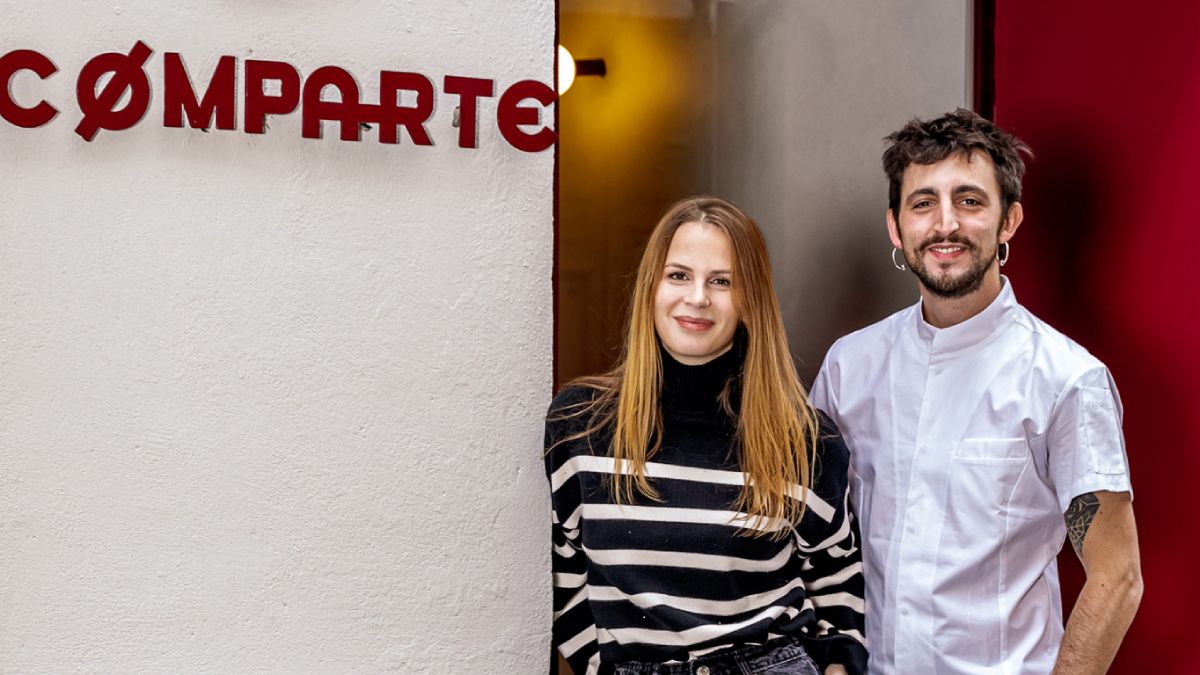Click here to read the Spanish version.
A trip to La Latina to take the pulse of a recent opening in Cava Alta. Aitor Sua, Lucas Fernández and Miguel Vallés opened Trèsde last April under a bistro format, whose offer is based on a ‘Starter-Plato-Dessert’ formula, for a price that barely exceeds 40 euros, at 10 tables and 28 seats. It occupies a local 100 meters, which was Matritum until the end of 2022. “We decided to be an updated eating house; we wanted to flee from the tasting menu, a type of business that is oversaturated”, they defend. One of them watches that Súa’s dishes and the wines selected by Fernández -who worked in various haute cuisine spaces- do not exceed the limits of Excel. This is Vallés’ role: he is the food manager. That is to say, these young people, who share the age of 30 and undertake without investors, cut expenses on extra luxuries or XL premises, but have a manager who reviews payments to suppliers and pays payroll, among other functions. “We feed, but we are a company,” they stress.
Is it the ‘bistronomy’ version 2023? Although there are exceptions, the youngest gastronomic ventures opt for ‘casualized’ haute cuisine models, in which they apply technical knowledge treasured in their curricula to projects that do not require a high investment, in not very large spaces where they limit the number of seats and rely on small teams -even, sometimes, without equipment-. Meanwhile, they dispense with luxuries -such as the purchase of expensive tableware- and concentrate their efforts on the use of seasonal products, which is usually based on a closer and more personalized relationship with small producers -sometimes also young ones-. Their offer tends to be brief and manageable: either a menu of not many dishes, or menus or formulas that are not too extensive and always subject to the daily arrival of raw materials. Instead of a large wine cellar that implies a high expenditure, they opt for special wine lists, with less common references. And finally, the vision of sustainability can be a juicy marketing temptation, but it seems that young talents translate it into not working more than 8 hours -which determines schedules-, in a reasonable dimensioning of their businesses and in focusing on doing profitable business.
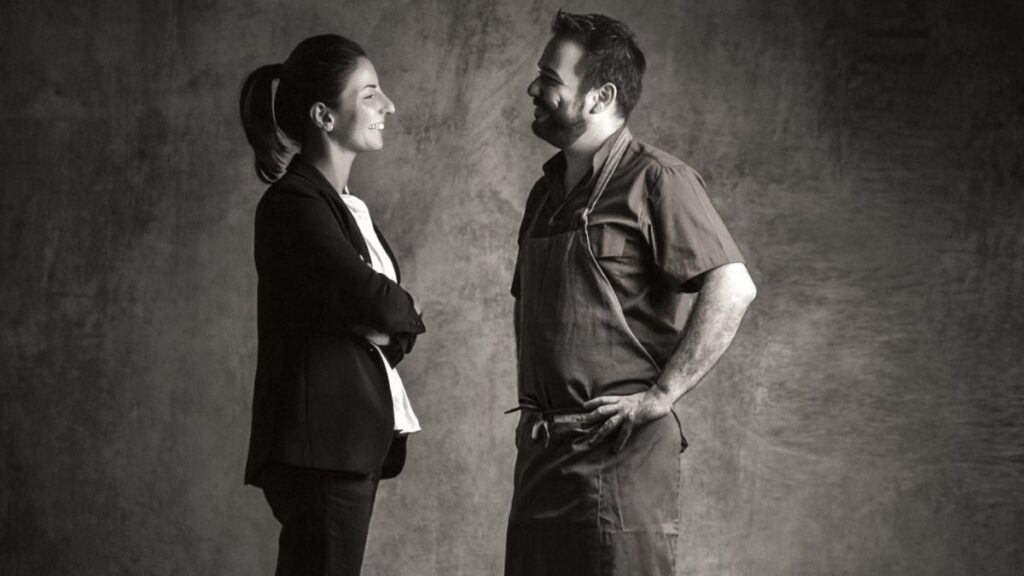
This parrafada of potential analysis on the current bet of the millennials of the gastronomic sector has been forged for years, but it seems that in recent years and more in the post-pandemic it multiplies. In 2018, Begoña Martínez and Pablo Montero changed Madrid for Cruz de Illas to not only open Gunea, but to opt for a quieter life that would allow them to make the personal project they were looking for. “At Gunea we update our menu daily based on the best products that nature, the season and our suppliers offer us,” they announce. After having worked in places like Nerua, Mugaritz or Abadía Retuerta and having started Taberna Recreo (Madrid), their project, a kind of rural bistro, occupies a house where they live and in which, after some time, they decided not to have employees, except in peak times of the summer. They even closed for a few months last winter when they became parents.
OPENINGS IN PAIRS
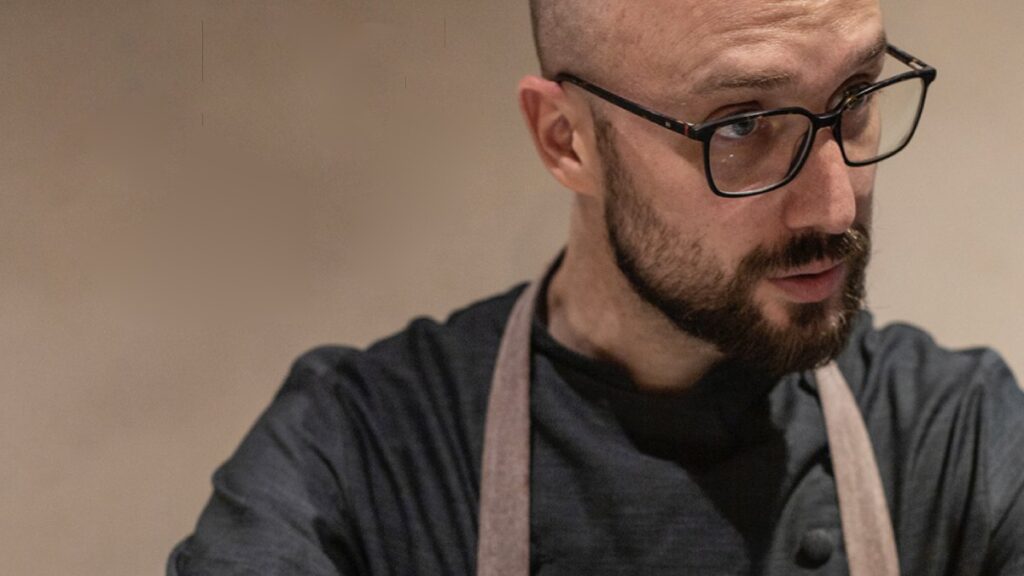
In the younger generations, there is a frequent recurrence of duo openings of restaurants where the owners sometimes share the knowledge of the dining room and kitchen and sometimes share the kitchen. Opened in September 2020 just behind the Congress of Deputies, Casa Mortero is the “bistro of stews and embers” of Pedro Gallego, in charge of the kitchen, and Carmen Pereda, in charge of business strategy. It’s a track that has recently dazzled Andoni Luis Aduriz, chef of Mugaritz, who on his trips to Madrid has recently visited young concepts that, why not, set the tone for one of the most attractive aspects of the local culinary market. Another of his visits repeats the model: La Llorería is the small restaurant of José Certucha and Carmen Alti, who, after working together at the two-star DSTAgE, opened a couple of years ago in the Chueca neighborhood.
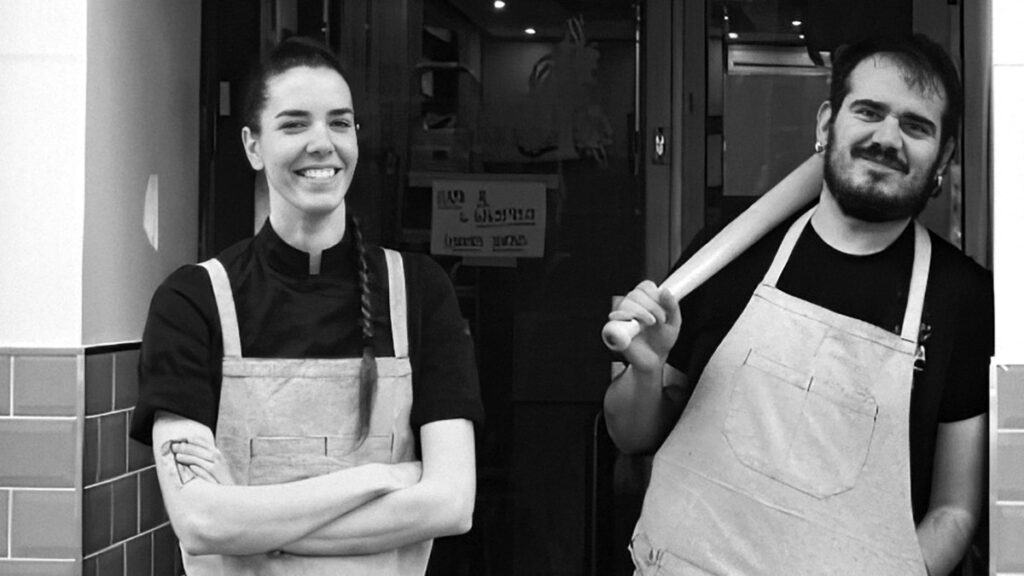
Trend or not, this bistronomy of the young generations is perceived in different parts of Spain, even with projects that, sometimes, are almost micro-restaurants. In Girona, Terram is the project of Adrià Bou and Leila Ajmil, with no other employees in a small place in Gerona, where Dit i Fet is the home of Júlia Trota and Adrià Edo. Charlotte Finkel and Mario Sánchez took a gamble in 2022 with the opening of Comparte Bistró in Chueca where they rely on a minimal team. In Mosqueruela, chef Alberto Montañés and journalist María Dávila, now head waiter and sommelier, moved to Mosqueruela in 2020 to open Existe, which has just moved to a new space in this area of Teruel. Something similar was done by 20-year-olds Olga García and Álex Paz when they converted Fuentelgato, her parents’ bar, into a small gastronomic restaurant in Huerta del Marquesado, in the Serranía de Cuenca.
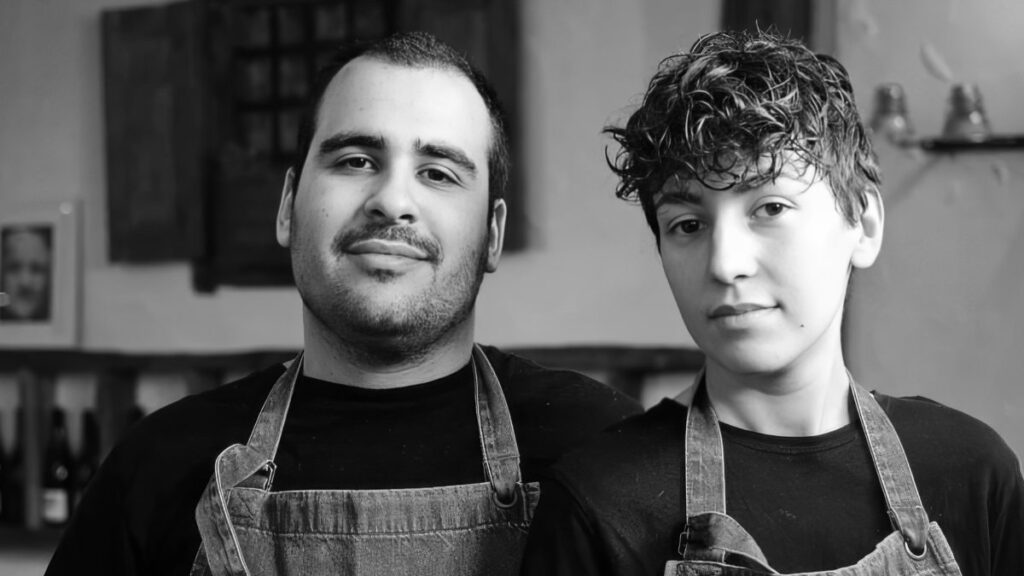
Are priorities changing? So it seems, or so say the young people. Open at the end of 2022, HIU is the project of Sergio Palacín, in Cambrils, whose proposal of “creative restless cuisine” is linked to concepts such as sustainable cuisine, zero waste or circular economy.
THE ‘AIZPITARTE BOOM’ IN 2017
You have to rewind a bit to put into context whether or not the latest ‘millennial’ movement in gastronomy is so novel. Let’s travel back 16 years: a lunch menu for 14 euros almost dynamited the Parisian gastronomic market when the cheeky Iñaki Aizpitarte launched this format at Le Chateaubriand. It was 2007 and this Basque-French chef confirmed that bistronomie was a trend set to multiply in the early years of the 21st century. It was not new, but in those years, chefs trained in large restaurants became independent to open businesses with menus based on seasonal dishes at moderate prices, under proposals in which they applied the know-how acquired in their experience in different restaurants. Farewell to culinary luxury? Not so much, since while the contraction of bistro and gastronomie marked a trend, some colleagues insisted on the haute cuisine side to dream of stars and awards.
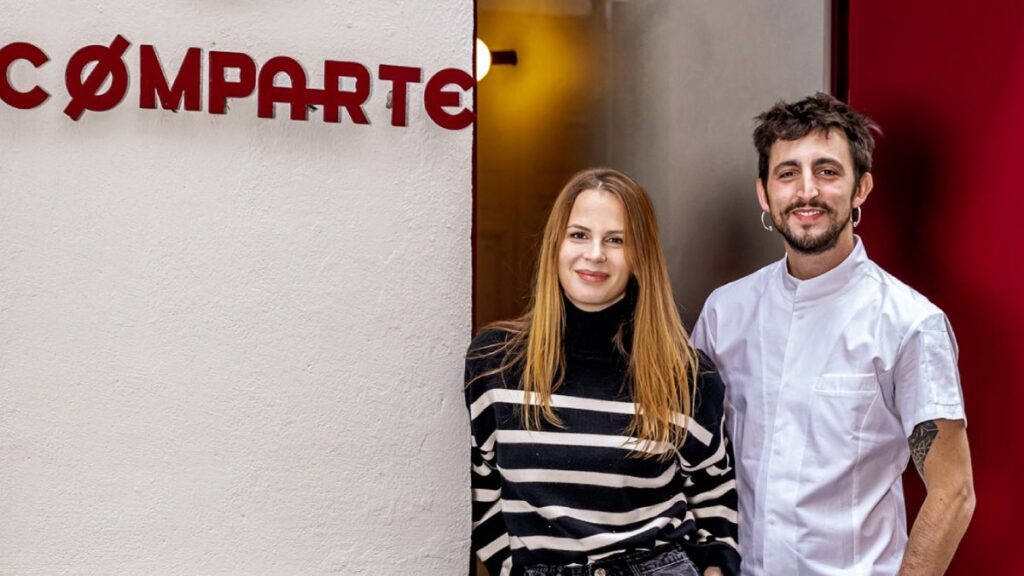
This bistronomie arrived in Spain and, specifically, in Barcelona. Who knows Embat, La Mifanera, Coure, Hisop…? They were representatives of bistronomie, because here the trend became Spanish. It came to take shape with certain features: elongated premises in the Ensanche, where the owner-couples divided functions between the kitchen and the dining room, with good seasonal products that they praised. But, in those Barcelona spaces, oversized wine cellars, fancy tableware, tablecloths of thread, armies of waiters or details such as valet parking were superfluous. Sounds like 2023.
But, in those years, not everything was like that. Sergi Arola, considered one of the most promising young chefs in the late nineties when he settled in the first location of La Broche in 1997 in Doctor Fleming. From there he moved in 2000 to Occidental Miguel Angel, where he closed to become independent in 2008 with the opening of Sergi Arola Gastro in Zurbano, after an investment of 1.7 million euros in his project. At about the same time that Aizpitarte was offering his menu for 14 euros in Paris (40 at night), the Catalan chef offered an executive menu for 91 euros at noon, as his most informal and affordable formula, compared to the other formulas for prices between 116 and 151 euros.
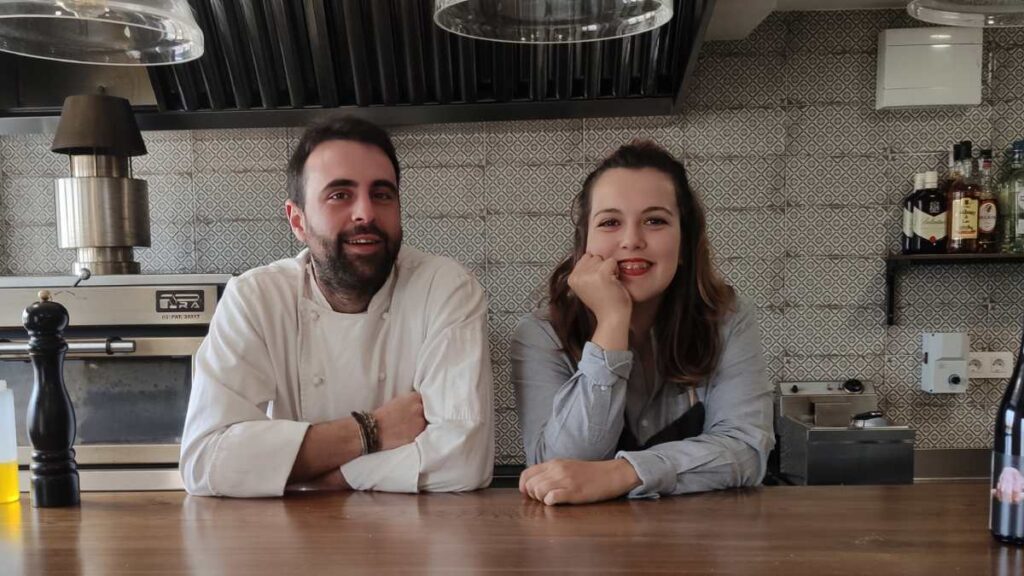
Arola’s is just one example of the model in force in a good part of the haute cuisine market fifteen and even ten years ago. In those years, many wanted to be Ferran Adrià, so chefs who are now veterans started out opting for luxurious models -sometimes with partners-, although the bistronomy of Barcelona opened the door to a “casualized” haute cuisine attractive to chefs who opted for relaxed formats and, even more so, to a good part of the diners who wanted to enjoy eating without any frills. For them, Rafa Peña, at Gresca, cooked and cooks. “Spending on hyper-expensive producers and downplaying the simple doesn’t make sense,” says this Catalan chef.
It was 2007 and chef Iñaki Aizpitarte confirmed that bistronomy was a trend set to multiply.
If, 15 years ago, the market saw more ambitious and luxurious openings subject to the ‘Bulli effect’ than casual models, is it the other way around today? Maybe, but there is also a rebound effect: young projects that are born with a truly ‘casual’ vocation and then veer towards the temptation of haute cuisine. AMA started as Javi Rivero and Gorka Rico’s tavern in Tolosa, with just 4 tables and a blackboard with the dishes of the day; since April, it is a more gastronomic space that operates with a menu for a price of 82 euros. “We sought to break with the idea of the tavern, which we dragged in our initial surname [as AMA Taberna]. The client now understands better that he is entering a more gastronomic restaurant,” Rivero justifies.
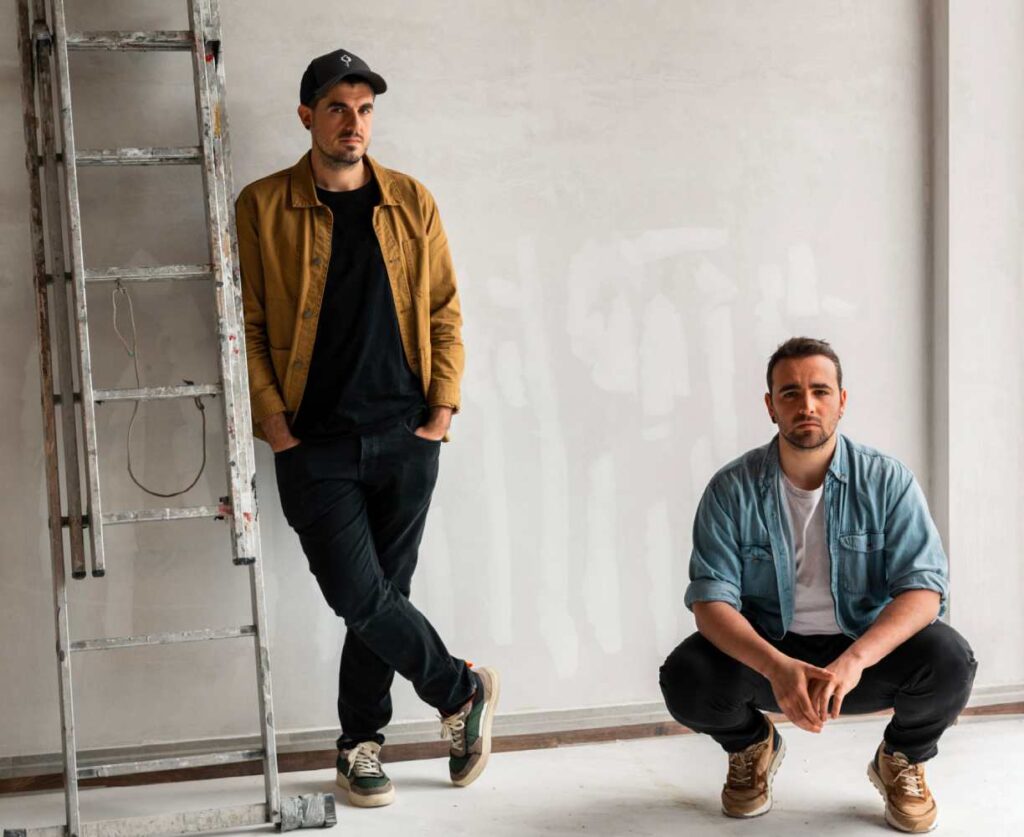
Javi Rivero y Gorka Rico pusieron en marcha AMA en Tolosa con vocación casual. Foto: Pablo García.
It is not an isolated case. Barro is the successor of Mûd Wine Bar, where Carlos Casillas with a partner created a wine bar in Ávila, a space that last spring he transformed into a restaurant with an ambitious gastronomic vocation, based on “the transmission of the gastronomic and cultural heritage of the region through the product, its history and its origin”, with a 16-course menu (89 euros).
Of course, not everything is casual among the young, nor among the veterans. For example, the multi-award-winning creators of Cañitas Maite, Javier Sanz and Juan Sahuquillo, insist on the haute cuisine route and multiply their projects with the support of the Sanz family. And, while chefs who spent decades defending Michelin stars are still determined not to leave haute cuisine, although they face it differently, as Óscar Velasco and Montse Abellà, who after working 20 years at the bi-starred Santceloni, became entrepreneurs in June with the opening of Velasco Abellà, a 100% gastronomic dining room, where in what almost seems a concession, they combine a menu for 110 euros with a menu for an average ticket of 100 euros.
What’s next? We’ll see, but why not? A lot of bistronomy, which, on top of that, gives more freedom to the diner.

